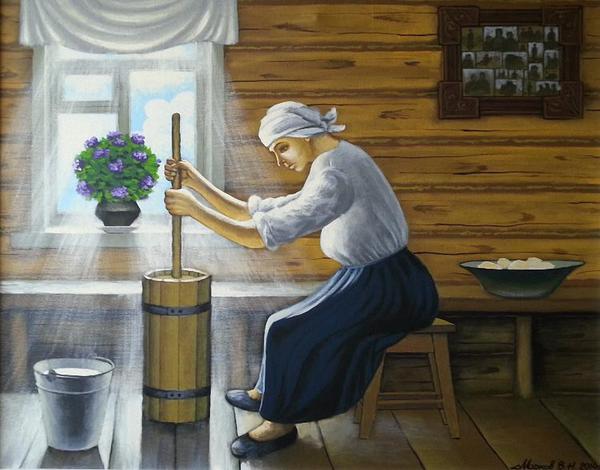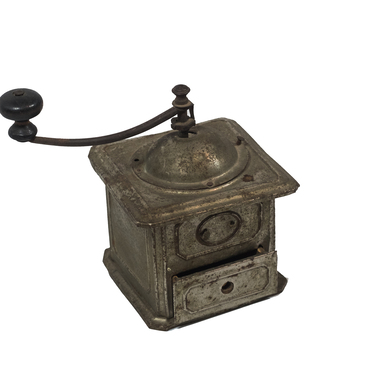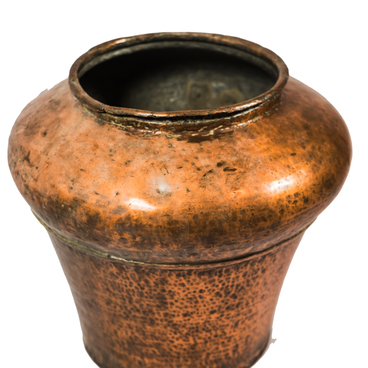The butter churn was necessary to make butter from slightly sour milk, cream or sour cream. Upon mechanical churning, milk fat was separated from the cream, and at first small pieces of butter were formed, which gradually clumped into larger lumps. Gradually, this mass would become more and more dense, air bubbles were removed from it. Finally, the butter was completely separated from the liquid, which was then drained through a special hole.
Butter churn
Время создания
Late 19th–early 20th century
Размер
30 cm × 16 cm
Техника
Handmande, woodwork
Коллекция
8
Открыть в приложении#1
Butter churn
#3
#6
#8
The collection of the Nevyansk Historical and Architectural Museum includes an oil churn in the form of a cylindrical vessel, similar to a miniature barrel. Its body consists of thin wooden planks pulled together with metal hoops. From above, the container is closed with a wedge-shaped lid with a hole in the center. There are wooden blades inside.
#5
In Ancient Rus', butter emerged as a food product as early as the 9th century. The product conventionally prepared in a churn could not be stored for a long time, so it was reheated in a Russian oven. The heated butter tasted better and lasted longer. Later, to preserve it better, they began to add salt to it. It took about 25 liters of milk to yield one kilo of butter.
#9
The industrial production of butter in Russia began in the 19th century. The butter industry began to develop very rapidly, and at the end of the 19th century there were almost 700 butter factories. Most of the butter produced in Russia was exported to other countries. But in every farm where cows were kept, this product was made for the farm’s own needs using a churn.
#10
If there was a lot of milk, butter was produced for sale. Twice a year—in June and December— Nevyansk hosted large fairs, which drew both local residents and visitors from other cities of the Urals and Siberia. The market square of Nevyansk was dotted with numerous stalls and booths. On the right bank of the Neyva River, there were bakery and butcher stalls, dubbed “the gluttony aisle.” Successful trade was facilitated by the convenient location of Nevyansk, between Yekaterinburg and the Nizhniy Tagil plant, as well as by the presence of the Siberian Railway and the Ural Mining Railway, which connected Nevyansk with the Urals and Western Siberia.
#11
State Autonomous Cultural Institution of the Sverdlovsk Region "Nevyansk State Historical and Architectural Museum"
читать дальшескрыть
00:00
00:00
1x
Butter churn
Время создания
Late 19th–early 20th century
Размер
30 cm × 16 cm
Техника
Handmande, woodwork
Коллекция
8
Открыть в приложении
Поделиться


